Spain’s Costa Brava: the perfect place for relaxation + adventure
Why visit Spain’s Costa Brava? Well, do you like spending your vacation wandering through quaint, cobble-stoned streets? Dining late into the evening on delicious small bites served up with world-class wines? Maybe some quiet beach time or a bicycle ride mixed in? If so, add the Costa Brava region of Spain to your list!
We love Spain for relaxing along its gorgeous Mediterranean beaches and consuming our weight in tapas! But we also crave adventure when we travel.
So, if you too are seeking more adventures in Spain than your average tourist, skip the Fodor’s or Rick Steve’s Spain travel itinerary! Instead, spend your holiday hiking, biking, and snorkeling through Spain’s Costa Brava region.
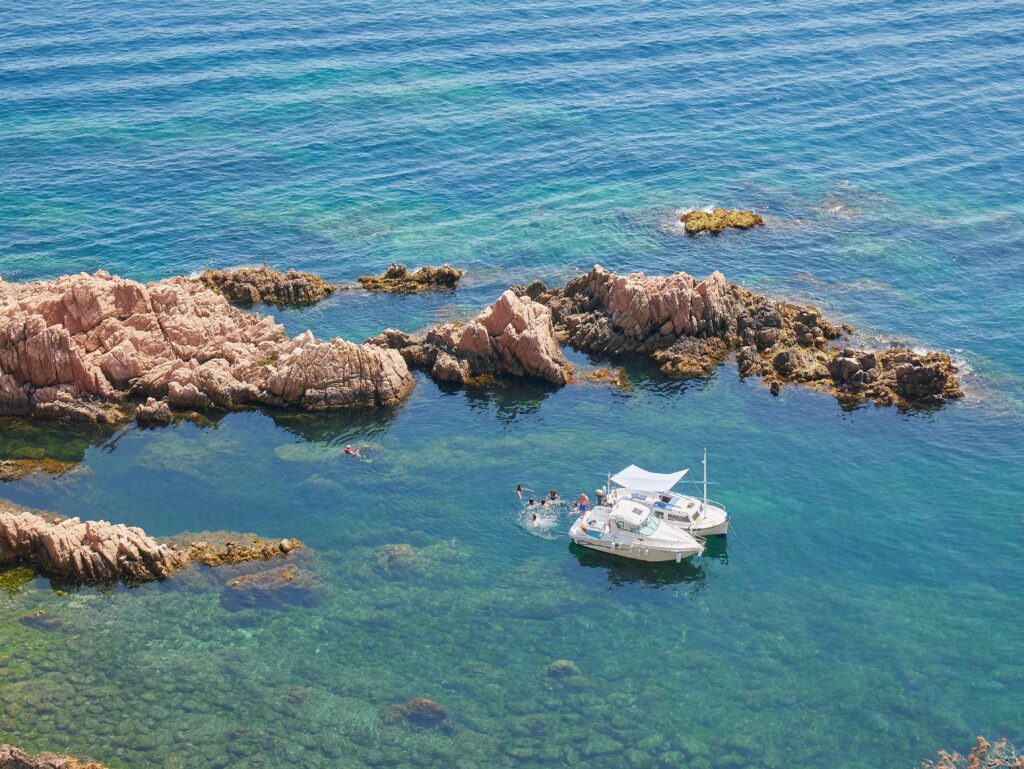
Spain’s Costa Brava or ‘wild coast’ features quiet, secluded beaches and protected coves nestled in between rocky cliffs. Perfect for swimming and snorkeling!
Where is the Costa Brava?
Located in the northeast corner of Spain, the Costa Brava is home to one of the most beautiful coastlines in Europe. Spain’s Costa Brava, or ‘Wild Coast’ region begins about 45 miles north of Barcelona and stretches along the coast all the way to the border with France.
The best way to get to the Costa Brava region is by car, but you can also take the train if you have some time and are ready for a little adventure! This wild coast of Spain is less-populated than the areas around Barcelona, Valencia, or Alicante. Therefore, public transportation will be more challenging.
But its gorgeous small towns dotting the rugged coastline offer more opportunities for snorkeling, swimming, hiking, and biking!
Here are a few of Costa Brava’s small towns you don’t want to miss:
- Tossa de Mar
- Sant Feliu de Guíxols
- Calella de Palafrugell
- Tamariu
- Cadaqués
Best Time to Visit the Costa Brava
There is no way to guarantee the perfect sunny days and warm temperatures for your trip. However, it’s best to visit Spain’s Costa Brava in the late Spring or early Fall. Visiting Costa Brava during these months will also mean fewer crowds, good beach weather, and more affordable travel accommodations!
If you only have time to travel to Spain’s Costa Brava region during the holidays or peak summer months, no fear. There are still endless opportunities to stay cool and steer clear of the crowds.
Whatever time of year works best for you, once you start narrowing down dates, check out Spain’s event calendar to see what’s happening and when! Also, keep in mind, some of these little beach towns close down for the winter!
Getting to the Costa Brava and Getting Around
Unless you’re coming to Spain from France or Portugal, chances are you’ll be catching a flight. Here are the airports you might be flying into:
-
Girona Costa Brava Airport – Located just outside of Girona, the largest city in Costa Brava. It’s under an hour to reach the coastal towns from here.
-
Josep Tarradellas Barcelona- El Prat Airport – The airport in Barcelona might be a better option if you’ll be heading in from more international destinations.
Once there, consider renting a bicycle in Girona, or doing some hiking to visit hidden coves and secluded beaches throughout the Costa Brava! There are plenty of places along the coast where you can rent a mountain bike, road bike, beach cruiser, or even an e-bike!
In addition, try hiking on the camí de ronda, which runs all the way from Blanes up the Costa Brava to Portbou on the border with France. The camí de ronda consists of more than 200 km of coastal paths, most dating back to the nineteenth century.
These beautiful trails were originally used to watch out for smugglers! Some sections along the trail are overgrown or in disrepair, but others offer gorgeous views and a fun way to travel in between towns!
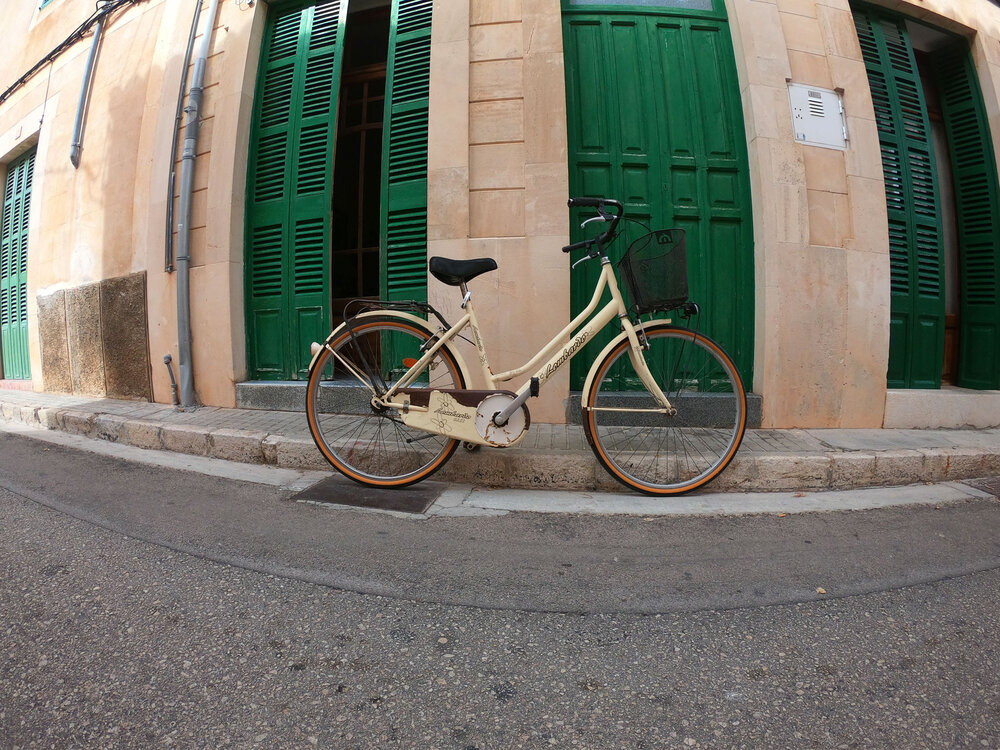
Getting around the Costa Brava in Spain is best by rental car or train. But, once in smaller town, cruising around the narrow streets by bicycle is a breeze!
Costa Brava’s most popular towns
-
Tossa de Mar– On your drive out of Barcelona, the town of Tossa de Mar might be a good 1st stop. Here you’ll find a beautiful sandy beach flanked by rocky cliffs and a fortress to the south. Perfect for hiking and biking. We also found a few short, bolted climbing routes on the sea cliffs just south of town. Not on Mountain Project, but worth checking out.
-
Tamariu– If you seek a more remote spot along the Mediterranean, Tamariu in the Palafrugell area is a picture perfect coastal paradise. You can walk down to the beach for snorkeling, kayaking or just relax in one of the cafes on the shoreline.
-
Cadaqués– Are you a Salvador Dali fan? Then Dali’s home, now converted into a museum in Cadaqués, is not to be missed. This picturesque seaside village is on the northern end of the Costa Brava and is very pedestrian-friendly, no cars are allowed in!
- Girona– From its medieval walls to its monster stairs, to its scenes right out of Games of Thrones (Parts of Season 6 were filmed here!) In addition, in the winter months, road cycling teams begin to show up in Girona for pre-season training camps. It has indeed become a hotbed for cyclists in the off-season as well! Perhaps World Champion Marianne Vos might just be passing you on her hill repeats of Rocacorba!
Where to Stay in Spain’s Costa Brava
There are so many beautiful Airbnbs and small hotels throughout the seaside towns of Costa Brava. In addition, there are incredible Paradores. These are castles, monasteries, or other historic buildings in Spain that have been tastefully converted into hotels.
Look for smaller hotels or bed & breakfasts that are a block or two away from the beach. This ensures that if there’s any nightlife or street noise on the main seaside promenades, you can rest easy!
We recommend booking accommodations in advance, especially in the summer or around the holidays. Consult review sites like Trip Advisor to identify hotels with the best reviews. However keep in mind, most reviewers may not be ‘adventurers.’
Here are some of our favorites:
- Hotel Diana, Tossa de Mar
- Casa Granados, Tossa de Mar
- Hotel Hostalillo, Tamariu
- Camping Cala Llevado, south of Tossa de Mar
- Hotel Cala del Pi, Platja de Aro
- Hotel Sant Roc, Callela Palafrugell
- Parador de Aiguablava, Platja de Aiguablava
- Hotel Playa Sol, Cadaqués
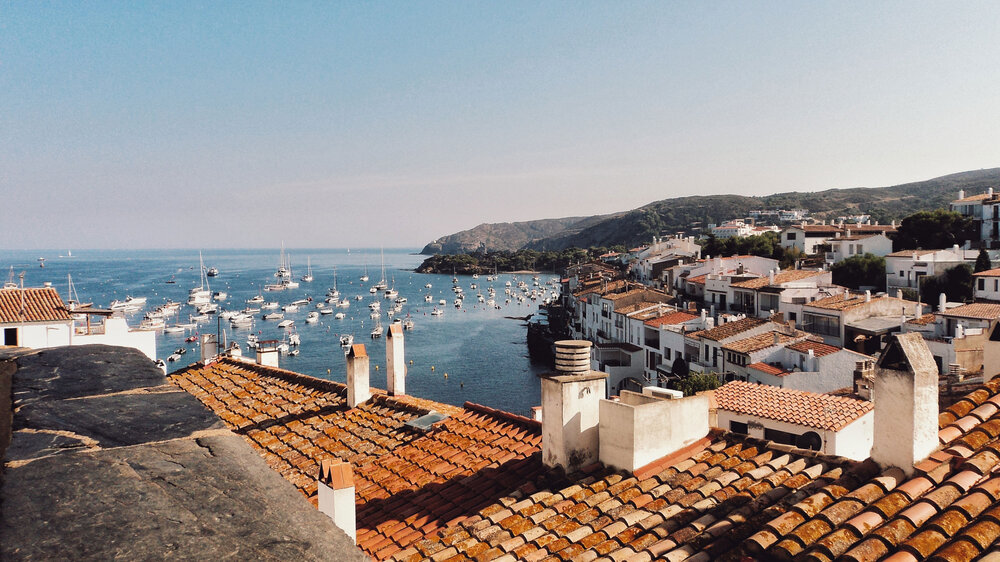
Along the Costa Brava or Wild Coast of Spain, you’ll find plenty of small seaside towns with great views for every hike, bike, or snorkel.
Where to eat in the Costa Brava
Planning Your Meals
There are so many great places to eat in Costa Brava, and it is very affordable! First, try to eat breakfast at your hotel each morning. The room rates in Spain often include breakfast.
However, if you’re thinking you will be served an American-style continental breakfast, think again. The breakfast spread in the towns along the Costa Brava often includes cured meats, cheeses, eggs, tomatoes, and delicious Pain au chocolat.
Then, once you’ve enjoyed a full breakfast, you can pack a sandwich for the afternoon to fuel your outdoor fun!
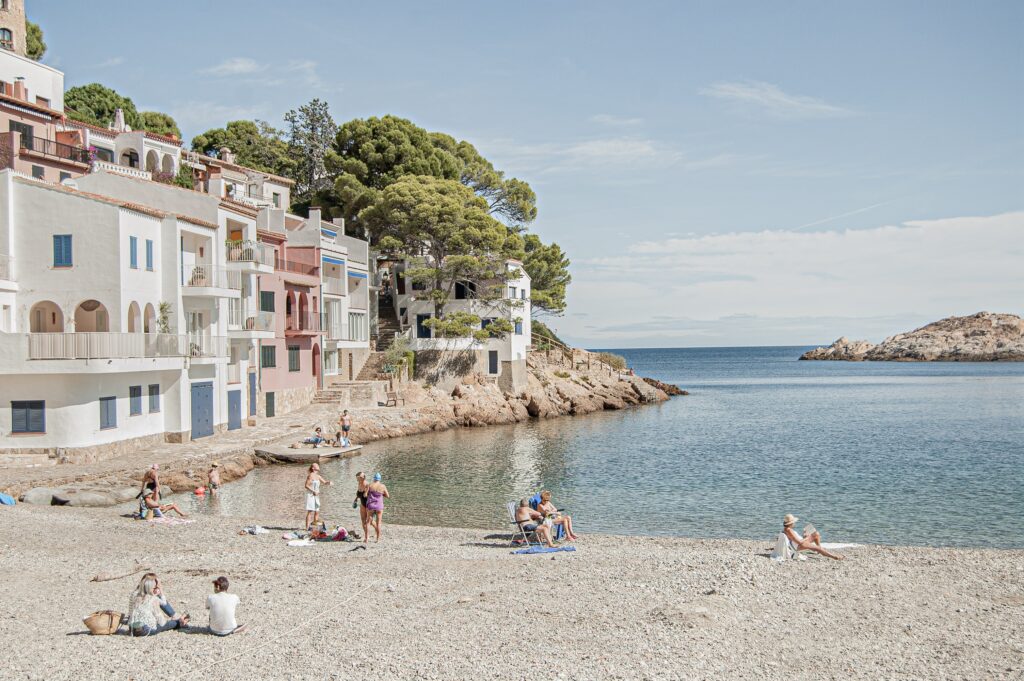
Take some time to wander through Costa Brava’s smaller beach towns and be rewarded with quiet beaches!
STOP FOR A COFFEE, STAY FOR APERITIVO
Do you need a good dose of caffeine before starting your day? Well, the coffee in Spain is often made to order. Try a cappuccino, cafe con leche, or an americano. You will not find too many Starbucks around. And a ‘to-go’ cup is still a bit foreign. So, take a few extra minutes and sip your espresso at the bar instead.
And furthermore, there is nothing wrong with planning your day around where you will find the best seafood and mouth-watering Jamon Iberico! Dishes like paella may be found in the more touristy restaurants, but skip this. Good paella is really found farther south in Spain.
And in the early evening, join the locals for aperitivo. Think of it as a happy hour! In addition, there are normally lots of tapas or pinchos served, for free, as long as you purchase a drink!
As for the sangria? Leave that for the tourists as well. Instead, splurge (we’re talking $10-15€) on a great bottle of Tempranillo from one of Spain’s incredible wine regions like the Rioja, or Ribera del Duero!
Languages spoken in the Costa Brava
While Spanish is the official language, the Costa Brava is in Catalonia, a fiercely independent region of Spain that has retained much of their ancient cultural heritage. Most Spaniards you will encounter will speak Castilian Spanish. However, you will hear Catalan in the Costa Brava, especially closer to Barcelona.
Already fluent in Spanish? Well, then you have nothing to worry about. Castilian Spanish is spoken by 99% of Spain’s inhabitants. We also found Duolingo to be the best free (and fun) app to practice our Spanish every day.
In addition, interacting with locals during your travels in the Costa Brava is one of the best ways to learn the language.
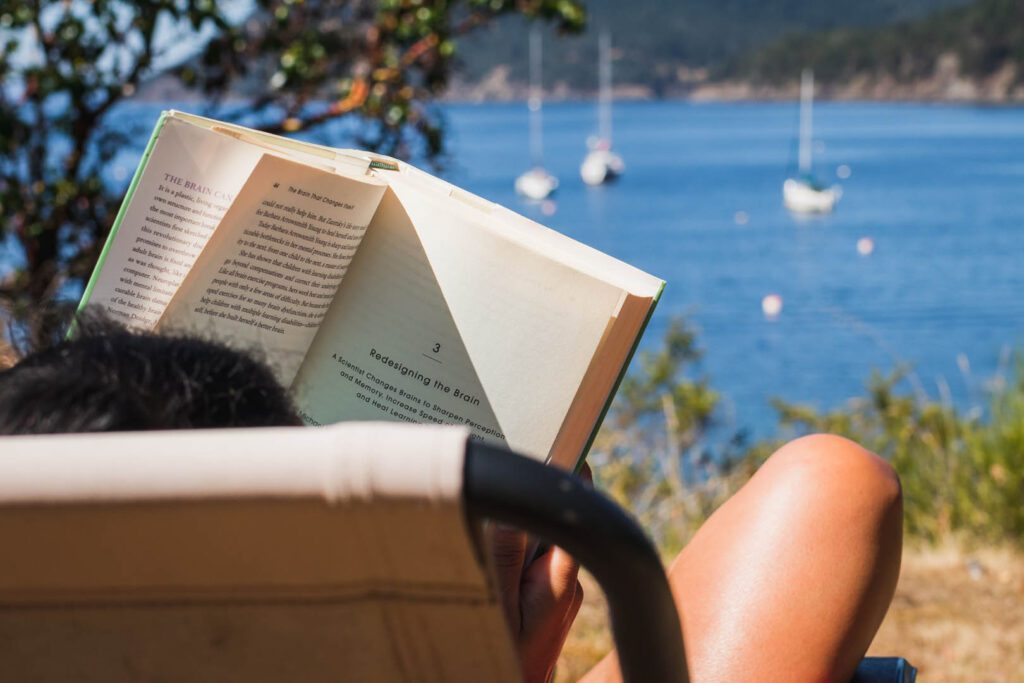
Settle in and finally read that book on your vacation in Spain’s Costa Brava!
Guidebooks for the Costa Brava in Spain
We are a huge fan of the Falcon Guide Books for exploring Spain, whether hiking, biking, or rock climbing. Other books and guidebooks that are good for you to download or take with you:
Want more ideas for adventure travel?
As an outdoor adventurer, it is hard to beat the Costa Brava region of Spain for combining relaxation and fun activities. Want more adventure tips and travel destinations? Check out some of our other travel blogs here:
Until next time, follow Top Rope Media’s daily wanderings on Instagram, Facebook or Twitter.
Happy travels!
– Meredith McConvill